

In this article, we are going to discuss two ways to resolve the problem of the lack of COM ports on computers running the Windows 10 and/or 11 operating system . Windows 10 and/or 11 COM port issues plague many users whose computers have been designed without the inclusion of any serial interfaces. The absence of physical COM ports can hinder a user’s ability to make use of computing peripherals that transmit their data serially.
The way to resolve this issue is through the use of Windows virtual serial ports. It can be very frustrating to query your Device Manager with the expectation of finding COM ports only to find that they are not present. We are going to show you two different methods you can use to add COM ports to Windows 10 and Windows 11 . One is a procedure that employs the native functionality built into the operating system and the other uses third-party software.
Virtual COM Port Driver 14-day free trialFinding virtual COM port in Windows 10 causes issues for some users. Individuals navigate to their Device Manager, anticipating that they’ll find virtual COM port drivers previously loaded on their machine.
However, when they open their Device Manager, they’re perplexed and frustrated once they realize these COM ports aren’t listed.
The reason being, said serial port option may not be available because of the Windows 10 update installation.
The update could impact virtual serial port drivers ability to load specific devices by default. This creates a major problem for those using such (seemingly) incompatible devices.
There are several solutions. One option is to find com port Windows 10 by following the steps below:
Step 1: Open the Device Manager.
Step 2: From the menu bar, click View.
Step 3: Choose “Show hidden devices”.
Step 4: From the list of hidden devices, find the Ports (COM & LPT).
Step 5: Expand the same menu (“+”) to check for the missing COM ports.
If you can't find com ports this way, the next step is investigating how it can be done with Electronic Team’s Virtual Serial Port Driver for Windows 10 virtual serial ports.
To ensure the easiest solution possible, see our step-by-step procedure below. A process that can help users eliminate problems with their COM ports on Windows 10 in as few as three clicks.
Keep reading to learn how easy and convenient it is to use this Windows 10 virtual COM port driver.
When the COM and LPT ports do not appear in your Windows 10 Device Manager your ability to perform your work is negatively impacted. There is a way to resolve this annoying problem in a manner that will prevent it from recurring. The solution is to install the aforementioned Virtual COM Port Driver from Electronic Team . This application allows the creation of an unlimited number of virtual serial port pairs. The virtual COM port pairs employ a virtual null-modem connection to enable communication with each other.
When you use Virtual Serial Port Driver to create Windows 10 virtual COM ports, each virtual port replicates the settings and functionality of a physical interface. They will consistently appear in Device Manager just as if they were actually real ports.
Virtual Serial Port Driver
Virtual Serial Port Driver 5 Rank based on 367 + users, Reviews(367) Download 14-day fully-functional trial period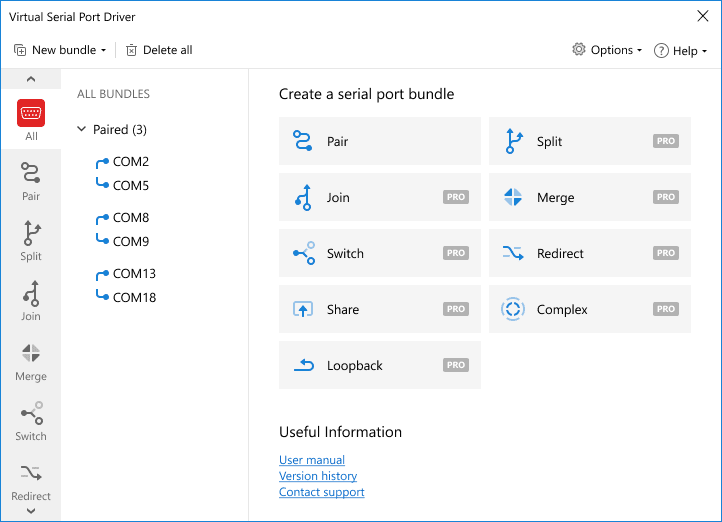
Users engaged in the practice of developing and testing serial applications and hardware will benefit from the configuration options that are possible through the use of Virtual Serial Port Driver. One example is the ability to allow two applications to share data via virtual serial ports. Connecting the apps with a pair of virtual COM ports lets the data written by one program be immediately made available to the other program. This can save significant time and effort when debugging and testing serial apps and devices.
You may be interested in related articlesStep-by-step guide to add virtual COM port Windows 10:
Following these steps with Virtual Serial Port Driver (VSPD) will enable you to easily create virtual serial ports on a Windows 10 machine:


Launch the application and navigate to the “Manage Ports” tab. Here you can select ports from the drop-down menu or manually enter custom port names.

After selecting the port names, simply click the “Add Pair” button and you are done! You have now created virtual COM ports which will appear as if they were physical ports in both Serial Ports Explorer and your system’s Device Manager.

If you desire to delete the pair of ports, simply select it in the Serial Ports Explorer. In the “Manage port” tab just select and click on “Delete pair” and they are gone.
Most often, virtual COM ports in Windows 10 install automatically when a user connects a converter to a computer with internet access. Unfortunately, there are Serial Converter device drivers that won’t automatically install on certain operating systems.
This is not a major issue, as users can simply install the drivers utilizing the disk that comes with their specific Serial Converter.
Follow the instructions below to install Serial Converter device drivers from a disk:
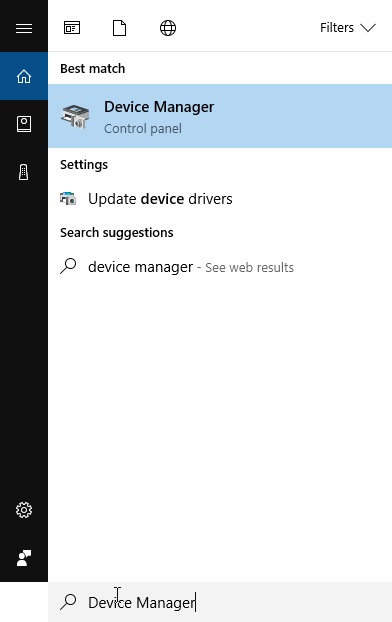
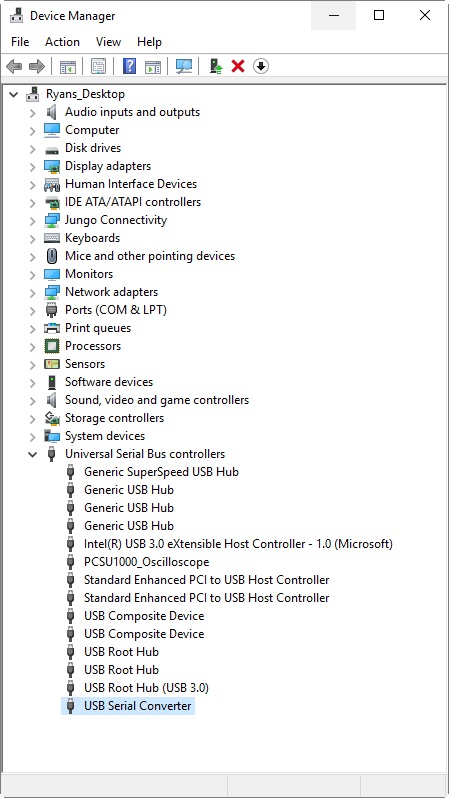
Some software applications are designed to only operate with designated serial ports. If you need to work with this kind of program, you may need to know how to find port numbers in Windows 10 so you can modify them if necessary.
In many cases when working with older devices or applications, you will be called upon to change COM port numbers to successfully operate the programs and peripherals. Some legacy equipment is only capable of working with specifically named serial ports.
The following procedure allows Windows users to change the COM port number for any attached device.


There are multiple scenarios in which you may need to assign a COM port to a USB device on your Windows 10 computer. Some devices need to have a COM port identifier that falls within a certain range, say between COM1 and COM4. Windows may have assigned a different identifier to the port which you will be required to modify. It’s a relatively simple procedure to perform.
Here is how to assign a COM port to a USB device Windows 10:


Following these steps will enable you to change the COM port identifier for USB devices attached to your Windows 10 machine.
You may be interested in related articlesCOM port (Communication port) is the title given to the port serial interface that’s located in a common (IBM compatible) computer.
There are occasions when computers offer users one or two physical COM ports (RS-232), but today's models usually lack these physical COM ports. It should be known that COM ports don’t always refer to physical ports. Virtual ports are available as well. These ports are developed when a USB-to-UART adapter is used—most often utilized by FTDI and Croduino.
See below for multiple examples of such devices (AKA cell phones, USB modems, RFID readers, card readers, etc.)
In each instance where Windows registers a new device (one which possesses a new ID), Windows connects that device to an empty port, from COM 1 port if you didn’t have any connections before, then (COM2, COM3, COM4, etc.—from 1 to 255).
Additionally, every port is exclusively assigned to a single device, remaining occupied (Windows displays the COM port as “in use”) even when the device isn’t connected anymore.
For a majority of the time, this isn’t an issue unless users attempt to run certain legacy software (software that struggles to function with COM-ports higher than 9.)
One example is when an app functions effectively with COM1 to 9, but fails if no unoccupied COM ports below COM10 are available.
Another problem can occur when certain devices require far too many COM ports to function.
Specific adapters could reserve up to 30 (or more) COM ports. This situation means users are forced to delete COM ports being used in Windows—or switch a currently occupied COM port to a different device.
The tutorial below will explain how to clear currently occupied COM ports, as well as how to disable the numbering of new ports.
HKEY_LOCAL_MACHINE\SYSTEM\CurrentConstrolSet\Control\COM Name Arbiter .
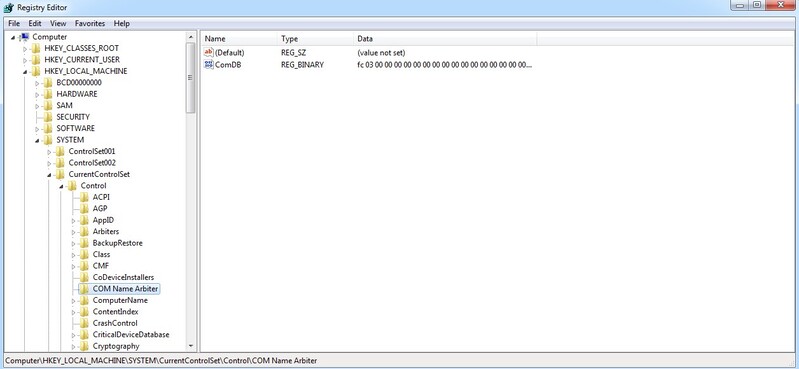
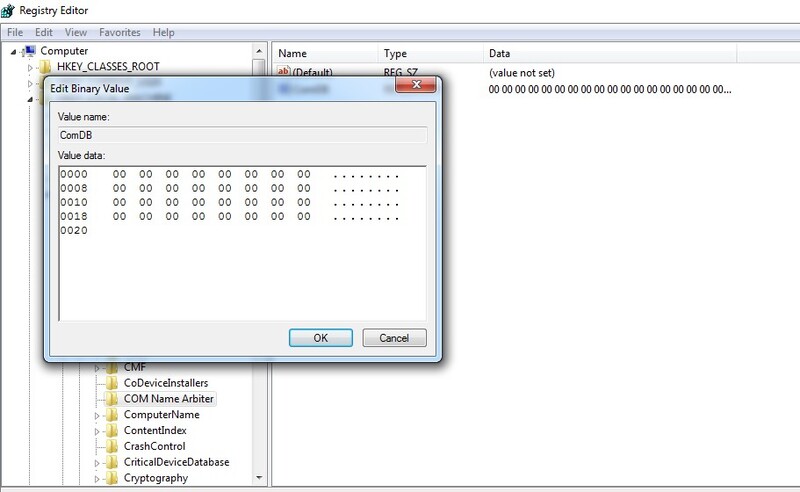
Virtual COM port (VCP) drivers make USB devices appear as additional COM ports that the PC can access. USB devices can be accessed by application software similarly to how it would access standard COM ports.
Future Technology Devices International Limited’s software is offered “as is”. Any and all described (or implied) warranties (including, but not limited to, implied warranties of merchantability and fitness for a particular purpose) are disclaimed.
In no event shall Future Technology Devices International Limited be liable for any direct, indirect, incidental, special, exemplary, or consequential damages (including, but not limited to, procurement of substitute goods or services; loss of use, data, or profits; or business interruption) however caused, and on any theory of liability, whether in contract, strict liability, or tort (including negligence or otherwise) arising in any way out of the use of this software, even if advised of the possibility of such damage.
FTDI drivers can be used only in conjunction with products based on FTDI parts.